Famous Viking Warrior Eric “Bloodaxe” Haraldsson: King Of Norway
A. Sutherland - AncientPages.com - Erik Haraldsson (885 - 954), nicknamed Eric Bloodaxe, was a 10th-century Norwegian ruler. He is thought to have had short-lived terms as King of Norway and twice as King of Northumbria (c. 947–948 and 952–954).
Erik Bloodaxe ("Blodyxa") was the oldest son of Harald (c.860 - c. 940), the first king to claim sovereignty over all of Norway, who ruled his country as a fair and powerful king for over 50 years. He was the greatest king in Norwegian history, respected as the father of his people, and a dominant figure of the Viking Era.
The Icelandic sagas say that Harald Fairhair had 20 sons, but his kingdom was somewhat limited and insufficient to provide a legacy for so many sons.
However, many of the details of Harald's reign are cloaked in mythology and folklore, and Erik's historical records are strikingly obscure. Legendary depictions in the kings' sagas differ, where Eric takes part in the tales of his father, Harald Fairhair, and his younger half-brother Haakon the Good.

Silver Penny of Eric Bloodaxe. Image source - source - British Museum
It is said that Erik secured his importance by gradually killing all his brothers. These actions probably´gave him his nickname "Bloodaxe"; in one of the Latin texts dated to the 1200s, Erik is called "fratris interfector" - brother killer.
Erik's reign in Norway was hard and unpopular, and his royal power was challenged by his one surviving, younger half-brother Hakan, who is said to have grown up in England at King Aethelstan's Court.
Hakan sailed to Norway to claim their inheritance, and Erik fled to England, where he was occupied with raids in Scotland and around the Irish Sea. Ancient tales say Athelstan welcomed him because of the friendship between his father, Harald Fairhair and Athelstan, who appointed him ruler of the Viking kingdom of Jorvik Northumbria.
However, the English and Irish sources – disagree. According to the Anglo-Saxon Chronicle and various Irish chronicles, Erik became King of Northumbria (c. 947- 94). It was several years after the death of Athelstan. Still, a later chronicle of William of Malmesbury mentions diplomatic relations between Athelstan and Harald Fairhair that fit with the fairy tale tradition.
Erik was briefly mentioned in several contemporary or near-contemporary sources; there is also his depiction on a coin issued in his name in York. However, available historical data about this Viking warrior is very scant.
He is mentioned in ancient Norwegian stories and Icelandic sagas, which identify Eric of Northumbria as a son of the Norwegian king Harald (I) Fairhair and, in many fairy tales, often with his wife Gunhild, portrayed as an evil witch. Ancient sagas use his nickname: "Blodyxa" (Bloodaxe) and describe him as a typical, violent Viking warrior.
The English and Icelandic sources say that Erik was killed in a battle. Erik was accompanied on this occasion by the five kings from the Hebrides and the two earls of Orkney.
Later sources, however, tell us that Erik was killed in an ambush on the desolate Stainmore, on the border of Cumbria, County Durham, and North Yorkshire.
Written by – A. Sutherland AncientPages.com Staff Writer
Updated on January 4, 2023
Copyright © AncientPages.com All rights reserved. This material may not be published, broadcast, rewritten or redistributed in whole or part without the express written permission of AncientPages.com
Expand for referencesReferences:
More From Ancient Pages
-
 How Did Hunter-Gatherers Spread Knowledge Of Pottery Vast Distances Over A Short Period Of Time?
Archaeology | Dec 28, 2022
How Did Hunter-Gatherers Spread Knowledge Of Pottery Vast Distances Over A Short Period Of Time?
Archaeology | Dec 28, 2022 -
 North America’s First Languages Originate From Siberia
Linguistic Discoveries | Apr 10, 2024
North America’s First Languages Originate From Siberia
Linguistic Discoveries | Apr 10, 2024 -
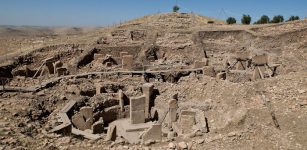 This Is The Mysterious Hilltop Where Civilization Began Scientists Say
Archaeology | Jun 24, 2022
This Is The Mysterious Hilltop Where Civilization Began Scientists Say
Archaeology | Jun 24, 2022 -
 Three Unusual Celestial Journeys And The Chosen Ones Initiated Into The Secrets Of The Gods
Ancient Mysteries | Jul 26, 2021
Three Unusual Celestial Journeys And The Chosen Ones Initiated Into The Secrets Of The Gods
Ancient Mysteries | Jul 26, 2021 -
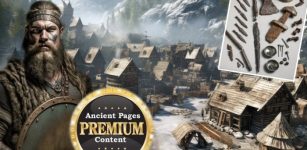 Archaeologists Solve A 1,000-Year-Old Mystery Mentioned In Norse Sagas
Featured Stories | Oct 10, 2024
Archaeologists Solve A 1,000-Year-Old Mystery Mentioned In Norse Sagas
Featured Stories | Oct 10, 2024 -
 Nebra Disc – Artifact That Represents 3,600-Year-Old Astronomical Knowledge
Artifacts | May 26, 2014
Nebra Disc – Artifact That Represents 3,600-Year-Old Astronomical Knowledge
Artifacts | May 26, 2014 -
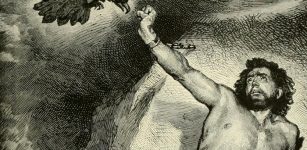 Prometheus ‘Fire Bringer’ – Hero Stealing Fire From Gods Giving It To Mortals
Featured Stories | Sep 5, 2018
Prometheus ‘Fire Bringer’ – Hero Stealing Fire From Gods Giving It To Mortals
Featured Stories | Sep 5, 2018 -
 Florentine Codex: Remarkable Manuscripts About Life Of The Aztecs
Ancient History Facts | Nov 15, 2016
Florentine Codex: Remarkable Manuscripts About Life Of The Aztecs
Ancient History Facts | Nov 15, 2016 -
 England’s Oldest Bible Reveals Surprising Hidden Secrets
Biblical Mysteries | Mar 19, 2016
England’s Oldest Bible Reveals Surprising Hidden Secrets
Biblical Mysteries | Mar 19, 2016 -
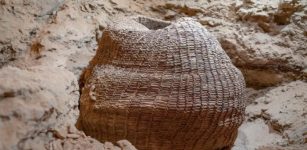 Perfectly Preserved 10,500-Year-Old Basket Found In Muraba’at Cave
Archaeology | Mar 18, 2021
Perfectly Preserved 10,500-Year-Old Basket Found In Muraba’at Cave
Archaeology | Mar 18, 2021 -
 Our Lineage’s Species Formation Pattern Was Unlike Anything Else
Evolution | Apr 18, 2024
Our Lineage’s Species Formation Pattern Was Unlike Anything Else
Evolution | Apr 18, 2024 -
 Mysterious Gympie Pyramid: Evidence Of An Ancient Lost Civilization In Australia?
Civilizations | Feb 13, 2020
Mysterious Gympie Pyramid: Evidence Of An Ancient Lost Civilization In Australia?
Civilizations | Feb 13, 2020 -
 Ancient Stone Tools Found In India Suggest Humans Ancestors May Have Left Africa Much Earlier Than Previously Thought
Archaeology | Feb 5, 2018
Ancient Stone Tools Found In India Suggest Humans Ancestors May Have Left Africa Much Earlier Than Previously Thought
Archaeology | Feb 5, 2018 -
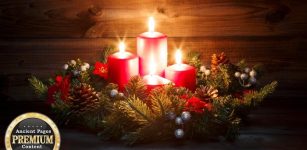 Advent: Facts And History About The Christian Season Celebration
Christmas Traditions | Dec 1, 2024
Advent: Facts And History About The Christian Season Celebration
Christmas Traditions | Dec 1, 2024 -
 Rare Bronze Hand Found At Roman Vindolanda
Archaeology | Jul 11, 2023
Rare Bronze Hand Found At Roman Vindolanda
Archaeology | Jul 11, 2023 -
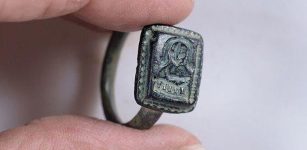 Ancient Bronze Ring Bearing The Image Of St. Nicholas May Have Been Worn For Protection
Archaeology | Dec 28, 2021
Ancient Bronze Ring Bearing The Image Of St. Nicholas May Have Been Worn For Protection
Archaeology | Dec 28, 2021 -
 Revealing 1,200 Years Of Arctic Canadian Cultures And Settlements In Canada
Archaeology | Jul 11, 2024
Revealing 1,200 Years Of Arctic Canadian Cultures And Settlements In Canada
Archaeology | Jul 11, 2024 -
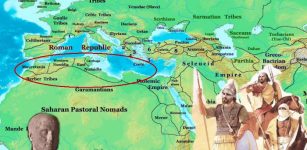 On This Day In History: Emperor Gordian II Loses The Battle Of Carthage – On Apr 12, 238 AD
News | Apr 12, 2016
On This Day In History: Emperor Gordian II Loses The Battle Of Carthage – On Apr 12, 238 AD
News | Apr 12, 2016 -
 Hermes – Divine Trickster, Psychopomp, Patron Of Merchants And Thieves In Greek Mythology
Featured Stories | Jan 15, 2019
Hermes – Divine Trickster, Psychopomp, Patron Of Merchants And Thieves In Greek Mythology
Featured Stories | Jan 15, 2019 -
 1,000-Year-Old Multi-Shaped, Double-Sided Mold For Jewelry Found In Swiss City Of Chur
Artifacts | Jul 26, 2020
1,000-Year-Old Multi-Shaped, Double-Sided Mold For Jewelry Found In Swiss City Of Chur
Artifacts | Jul 26, 2020

